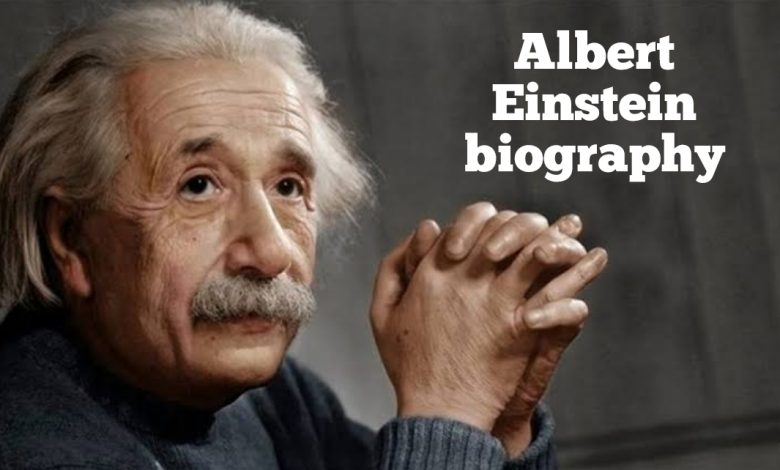Albert Einstein: The Genius Who Revolutionized Physics
Albert Einstein biography

Albert Einstein, a name synonymous with genius and innovation, stands as one of the most influential scientists of the 20th century. His groundbreaking work in physics reshaped our understanding of space, time, gravity, and the fundamental nature of the universe. This article delves into the life of this remarkable thinker, exploring his journey from a curious child to a world-renowned scientist whose theories continue to influence modern physics.
Early Life and Education
Born on March 14, 1879, in Ulm, Germany, Albert Einstein entered the world as the first child of Hermann Einstein and Pauline Koch. Contrary to popular myth, young Albert was not a poor student. However, he did show signs of a rebellious nature and a distaste for the rigid educational methods of his time.
Childhood and Early Education:
- Showed a fascination with science and mathematics from an early age
- Taught himself algebra and Euclidean geometry at 12
- Rebelled against rote learning methods in school
- His family’s electronics business nurtured his interest in science
Einstein’s early years were marked by a move to Munich, where his family operated an electronics business. This environment likely contributed to his growing interest in science and technology. At age 15, his family moved to Italy, but Einstein remained in Munich to finish his schooling, only to join them later after leaving school due to conflicts with authority figures.
Higher Education and Early Career
Einstein’s path to higher education was not straightforward. After failing the entrance exam for the Swiss Federal Polytechnic School (later ETH Zurich) on his first attempt, he spent a year studying at the Argovian cantonal school in Aarau, Switzerland. This experience proved crucial in shaping his scientific outlook.
Key Milestones in Education and Early Career:
- Enrolled at ETH Zurich in 1896, studying physics and mathematics
- Graduated in 1900, but struggled to find an academic position
- Worked as a patent clerk at the Swiss Patent Office from 1902 to 1909
- Completed his PhD from the University of Zurich in 1905
It was during his time at the patent office that Einstein produced some of his most groundbreaking work. The year 1905, often referred to as his “Annus Mirabilis” (Miracle Year), saw the publication of four revolutionary papers that would change the course of physics.
The Miracle Year: 1905
In 1905, Einstein published four papers in the Annalen der Physik, a leading German physics journal. These papers addressed fundamental problems in physics and proposed new ways of looking at the universe.
The Four Groundbreaking Papers:
- On the Photoelectric Effect: Explained how light behaves as both a wave and a particle, laying the foundation for quantum theory.
- On Brownian Motion: Provided empirical evidence for the existence of atoms.
- On Special Relativity: Introduced the famous equation E=mc², revolutionizing our understanding of space and time.
- On the Electrodynamics of Moving Bodies: Proposed the special theory of relativity, challenging Newtonian physics.
These papers, particularly the ones on special relativity and the photoelectric effect (for which he later won the Nobel Prize), established Einstein as a leading physicist and thinker of his time.
Rise to Prominence
Following the publication of his groundbreaking papers, Einstein’s reputation in the scientific community grew rapidly. He held positions at several universities, including the University of Zurich, Charles University in Prague, and the Prussian Academy of Sciences in Berlin.
Key Positions and Achievements:
- Appointed professor of theoretical physics at ETH Zurich in 1909
- Became director of the Kaiser Wilhelm Institute for Physics in 1917
- Awarded the Nobel Prize in Physics in 1921 for his work on the photoelectric effect
- Elected to the Royal Society in 1921
During this period, Einstein continued to work on his theories, expanding on the concept of relativity. In 1915, he published his crowning achievement: the general theory of relativity, which proposed that gravity is not a force, but a consequence of the curvature of space-time.
Later Years and Legacy
As Einstein’s fame grew, so did his involvement in social and political issues. He was an outspoken pacifist and advocated for civil rights and nuclear disarmament. His Jewish heritage and pacifist views made him a target of the rising Nazi regime in Germany, leading to his emigration to the United States in 1933.
Life in the United States:
- Accepted a position at the Institute for Advanced Study in Princeton, New Jersey
- Became a U.S. citizen in 1940 while retaining his Swiss citizenship
- Warned President Roosevelt about the potential development of an atomic bomb by Nazi Germany
- Continued his quest for a unified field theory until his death
Einstein spent the latter part of his life trying to develop a unified field theory that would explain all fundamental forces in the universe. Although he never achieved this goal, his work laid the groundwork for much of modern physics.
Personal Life and Characteristics
Einstein’s personal life was as complex as his scientific theories. He married twice, first to Mileva Marić, with whom he had three children, and later to his cousin Elsa Löwenthal. Known for his disheveled appearance and absent-minded demeanor, Einstein embodied the popular image of the genius scientist.
Notable Personal Traits:
- Passionate about music, particularly playing the violin
- Known for his witty remarks and philosophical musings
- Advocate for peace and civil rights
- Maintained a childlike curiosity throughout his life
Einstein’s unique personality, combined with his revolutionary scientific work, made him one of the most recognizable and admired figures of the 20th century.
Impact and Enduring Influence
Albert Einstein’s work continues to influence science and society long after his death in 1955. His theories form the foundation of modern physics and have led to numerous practical applications, from nuclear energy to GPS systems.
Lasting Contributions:
- Laid the groundwork for quantum mechanics and modern cosmology
- E=mc² became the most famous equation in history
- General relativity continues to be confirmed by new astronomical observations
- His name has become synonymous with genius in popular culture
Einstein’s life and work remind us of the power of imagination and the importance of questioning established beliefs. His journey from a patent clerk to a world-renowned scientist inspires people to pursue their passions and think beyond conventional boundaries.
As we continue to explore the mysteries of the universe, Albert Einstein’s theories remain a guiding light, challenging us to look at the world with wonder and curiosity. His legacy is not just in his scientific achievements, but in his embodiment of the quest for knowledge and understanding that drives human progress.
